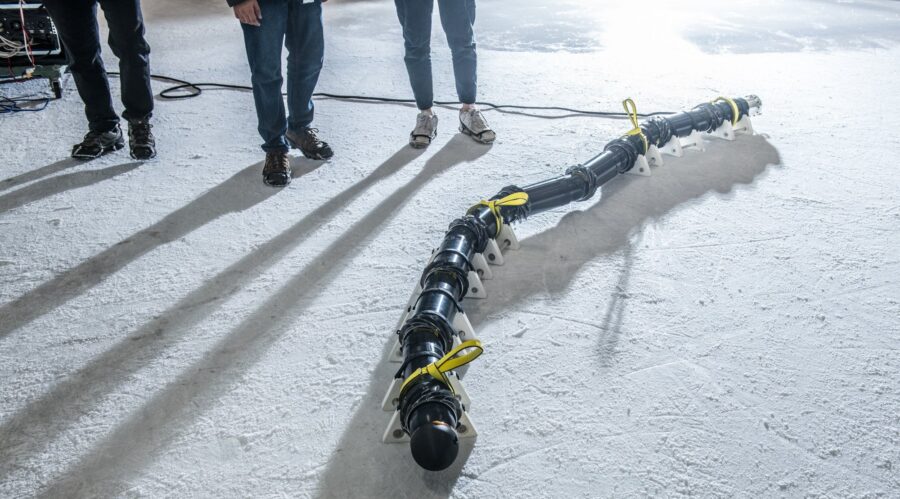NASA Is Using Robot Snakes To Look For Aliens
NASA is developing a snake-like robot to explore other planets.

NASA’s Jet Propulsion Laboratory (JPL) is designing and testing a robot snake that will, among other things, seek out alien life. The project is just the latest in the space agency’s ongoing quest to explore other planetary bodies, such as the Moon and Mars. Scientists hope it will allow them to explore where no one has gone before in ways no one has imagined before.
The JPL robot has a snake-like structure that will use rotating corkscrew fins to explore alien environments. For now, it’s going through its paces in multiple situations and conditions here on Earth, including sand, snow, and ice. A video released by JPL (above) shows the prototype, in two different forms, being run on an ice rink, in snowy mountains, and at the Mars Yard, the JPL’s testing ground meant to simulated the Red Planet.
According to Futurism, the robot snake, cleverly known as Exobiology Extant Life Surveyor (EELS), will be able to seek out alien life in a number of terrains that have been previously impossible to navigate. These will include the subsurface ocean of Enceladus, a moon of Saturn, where its spiral design will allow it to move and climb on the surface as well as navigate under water. Water is, of course, the chief element necessary for life and the best place to look for it on other worlds.
But there is more to the EELS robot snake than exploring alien worlds. It can also be used on Earth to examine deep fissures and other places that are otherwise inaccessible, using its advanced sensors on its head to map underground areas, as it they have already been used in the ice-covered Canadian Rockies. In that application, the sensor head was lowered into beneath the surface of the mountains on cables, but the EELS robot will eventually be able to autonomously deploy its head into such areas.

This advanced robot has to be able to do more, though, than snake around inside alien worlds. It has to be able to make decisions about how best to move forward in an unexplored region. As Futurism shared, Rohan Thakker, the EELS project’s autonomy lead, said in a statement that the robot’s missions could be likened to a self-driving vehicle traveling without roads, signs, or traffic lights, needing to “figure out what the road is” along the way.
In order for the robot snake to dive into the alien ocean of Enceladus, it will need to find its way down one of the multiple icy crevasses that lead below the moon’s surface. This means the EELS will need to be able to make a 100-foot drop autonomously, a feat that will be tested in the same Canadian mountain range later this year. The engineering challenge involved in accomplishing such a mission is enormous, but the design and function of the robot already looks amazing and is one of the most advanced robotics accomplishments ever attempted.
The EELS robot snake won’t be seeking alien life for some time yet, but as with much NASA technology, the engineering effort is already advancing our capabilities here on our home planet. As the project moves forward, it promises to give us more insight, not only into a moon of Saturn, but into Mars, our own Moon, and life here on Earth.












